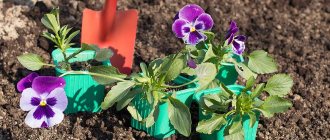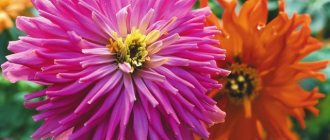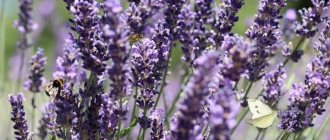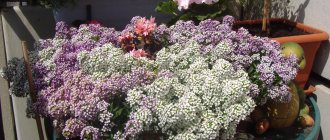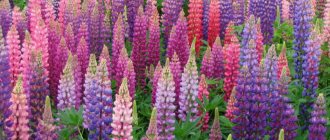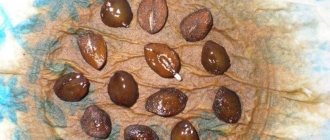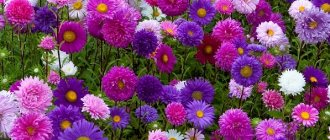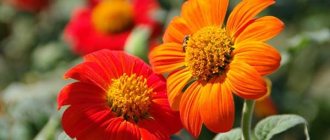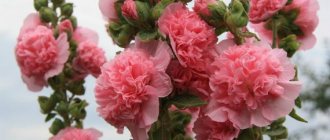Celosia is an interesting plant with unusual velvety inflorescences, which can be in the form of a comb, panicle or spikelet. These flowers are native to warm countries, so in our gardens the plant is grown as an annual in seedlings. There are different colors of inflorescences, with which you can unusually and effectively decorate a flower bed or flower garden in your country house. Growing celosia paniculata, comb and pinnate from seeds is not difficult, especially if you do everything according to our step-by-step instructions with photos and videos.
The photo shows a low-growing comb celosia
Attention! You can find out the favorable days for sowing celosia seedlings this year according to the Lunar calendar here.
Types and varieties
Based on the shape of the inflorescences, there are 3 types of celosia:
- Comb . The inflorescences resemble cockscombs (see photo). Popular varieties: Atropurpurea, Impress, Coral Garden and Empress.
- Cirrus ( aka paniculata) . The inflorescences form lush panicles that look like lush and colorful feathers (see photo). Gardeners like to cultivate the following varieties: Feuerfeder, Tomsoni Magnifica, Golden Flitz, New Onion and Pampas Plume.
- Koloskovaya . The flowers look like spikelets. They are long and fluffy. This type of celosia is rarely grown, since its decorative qualities are not as obvious as those of feathery and comb flowers (see photo).
Popular varieties
Each type of celosia is represented by different plant varieties, the most popular of which are described below.
Impress
The leaves of this variety of Celosia comb are purple in color. The inflorescences have the same color.
Atropurpurea
The stem of Celosia comb is pink-red in color. The leaves are green, oblong; convex veins are purple in color.
Imperialis
The variety is low-growing: comb celosia bushes grow no higher than 25 centimeters in height. Its leaves are dark red, almost burgundy. The inflorescences are purple.
Goldfeder
This is one of the varieties of Celosia silvery pinnate. The color of the plant's inflorescences is golden yellow. The height of low-growing bushes is 23-25 centimeters.
Tomsoni Magnifica
The plant reaches a height of 80 centimeters. The foliage is green, the paniculate inflorescences are burgundy.
Torchshain
The same tall plant, but the feathery inflorescences are colored red.
New Look
The height of the bushes is about 40 centimeters. Large feathery inflorescences are painted red.
Caracas
This is a tall variety: with good care it reaches a height of 1 meter. The leaves of celosia are green, the inflorescences are pink-purple.
Flamingo
The bushes are tall, erect, their height is about 80 centimeters. Spike-shaped flower arrows are painted pink.
When to sow celosia
In its natural environment, celosia grows in North and South America, as well as in Africa. There it is represented by annual and perennial species. But in the Russian climate, this flower is grown as an annual plant. And since the summer in our country is short, gardeners resort to the seedling method of growing these fiery beauties.
The time when it is time to sow celosia seedlings depends on the region in which you live:
- central Russia - mid-March;
- northern regions – April;
- southern regions – February.
Advice! At least two-month-old seedlings are planted in open ground, and it is better if they are 2.5 months old.
To calculate the optimal time for sowing seeds, simply subtract 2.5 months from the day after which spring frosts usually end.
Celosia pinnate: plant description
This graceful annual plant comes from Asia: it was first discovered in India and African countries.
Currently, it can most often be found in small gardens and greenhouses, where gardeners carefully grow this beautiful flower. Celosia is a flower with a rather powerful stem, about 0.3-0.9 m high. The plant is well leafy, the leaves are green in various shades (depending on the variety) with clearly defined veins. Some varieties have decorative foliage.
There are two main types of celosia. One has bright flowers that resemble a cockscomb and come in yellow, burgundy and other shades. The other has flowers that are very soft to the touch (like bird feathers), painted scarlet, golden or dark red.
Bright celosia flowers
There are about 60 species of this plant in the world, but three are the most popular: comb, pinnate (paniculate) and spikelet. As for pinnate celosia, it is very popular among gardeners around the world due to its bright appearance. This species is distinguished by its high “growth”: sometimes it can reach a height of 1 m, although there are also dwarf varieties. The plant has a straight, thick stem, at the top of which there are bright panicles of yellow, orange and red shades. The leaves can be not only green, but also red and even pink.
Soil for sowing seeds
To grow celosia from seeds, you need to prepare high-quality soil for seedlings. It should include:
- vermiculite – 1 part;
- humus – 1 part;
- washed river sand – 1 part;
- leaf or turf soil - 3 parts.
Mix all the ingredients and disinfect the resulting soil. To do this, it can be calcined in the oven or treated with a pink solution of potassium permanganate. After watering with potassium permanganate, the soil should be given time to dry.
Celosia silver comb
In the photo, silver comb celosia
The perennial plant is grown as an annual in our gardens. But if you wish, you can grow it at home.
Variety Atropurpurea
The photo shows celosia variety "Atropurpurea"
Compact bushes produce large purple-red inflorescences. Their leaves have pink veins, and their stems are not green, but soft pink.
Celosia variety Impress
The photo shows celosia variety "Impress"
A shrub with dark purple leaves and burgundy inflorescences.
Cockscomb
In the photo, celosia comb with an inflorescence in the form of a cockscomb
This is what people call celosia, the inflorescence of which is very similar to the comb of a rooster.
Celosia variety Imperialis
The photo shows celosia variety "Imperialis"
The plant's purple inflorescences are located on burgundy stems. The leaves are bright, purple, with red veins. The bush is only 25 cm high.
Celosia spica
In the photo, celosia spica
The inflorescences of this species are very similar to spikelets. The height of tall varieties can reach 1.3 m. You can choose a variety based on your color tastes, since the spikelets can have a color from pale to bright crimson, burgundy or red.
Thanks to breeders, today stores offer celosia varieties of a wide variety of colors. From them you can always choose a plant to your liking and taste based on the photo. Moreover, growing celosia from seeds, planting and caring for it will not take much time. Wishing you beautiful flower beds and flower beds in your garden!
How to prepare seeds before planting
Despite their small size, the seeds are equipped with a very dense shell. It prevents their germination, so germination may be low. You can increase it if, before planting celosia, soak the seeds in a solution of Zircon or Epin. Thanks to these preparations, the seedlings will be stronger and more resistant to various diseases. What you need for growing
Growing seedlings begins with preparation. You will need:
- ready-made soil mixture;
- wide capacity;
- cup;
- seeds;
- trowel;
- gloves;
- sprayer;
- boiled and cooled water;
- Epin (or other growth stimulant);
- vermiculite or sphagnum;
- a sheet of glass, a transparent plastic bag or a piece of greenhouse film.
For accurate sowing, you will need a toothpick. But many gardeners make their work easier and do without it.
Collecting seeds
The seeds ripen in seed pods towards the end of autumn. In order to collect Celosia seeds, you need to select several inflorescences that are beginning to fade. The inflorescences are cut off, placed in an empty vase, and taken out to a dark place. As soon as the inflorescences are dry, shake them well over a sheet of paper so that the seeds fall onto the paper. The collected seeds are blown and placed in a paper envelope and stored in a dry, dark place. When properly stored, they remain viable for five years.
Video: how to collect celosia seeds
Sowing seeds
Step-by-step instructions for sowing celosia seeds for seedlings:
- Wear gloves to protect your hands from accidental contact with chemicals.
- Prepare a solution of Epin or another growth stimulant. To do this, add 1 drop of the drug to a glass of boiled water cooled to room temperature.
- Dip the seeds into the resulting solution and leave them in it for 3-4 hours.
- Place a layer of moss or vermiculite at the bottom of a wide container. This will provide good drainage.
- Then use a scoop to fill the container with the prepared soil. Leave about 2 cm to the top edge of the bowl.
- Distribute the seeds evenly over the surface of the soil. It’s convenient to place them with a toothpick: when wet, they stick to it themselves. With this method of planting, it is advisable to maintain a distance of 3 cm between seeds.
- Using your palms, lightly, almost effortlessly, press the seeds into the soil. There is no need to bury them.
- Moisten the soil with a sprayer. There is no need to pour water from the watering can: the flow of water will wash away the seeds and make them go deeper.
After this, cover the container with glass, film or a transparent bag. This is necessary to retain heat and moisture, which are so necessary for seed germination.
Conditions for seed germination
In order for the seeds to germinate, the following conditions must be met:
- Constantly moist soil . If it dries out, don’t expect any germination. Therefore, check the soil daily. If it starts to dry out, spray it with boiled water at room temperature.
- Constant temperature at +23…+25 oC. This is easy to maintain if you cover the container with film. You will get a mini-greenhouse.
- Good diffused lighting. You can’t germinate seeds in direct sunlight, but you shouldn’t put the bowl in the shade either.
Open the greenhouse and ventilate it daily. Stagnant, humid air can lead to mold growth. For the same reason, it is necessary to remove accumulated condensation from the film every day. Such care will ensure the first shoots already on the 8th day after sowing the seeds.
Planting celosia
The photo shows celosia with unusual variegated leaves.
When to plant celosia seedlings in a flower bed
Like other heat-loving plants, celosia seedlings are planted in the garden at established above-zero temperatures.
You will be interested to know: Zinnia cactus: photo, growing from seeds, when to plant
Choose a sunny area for flowers, protected from drafts. However, here you need to pay attention to important points:
- In summer, the bright inflorescences will fade from the midday sun. Therefore, try to select an area for the celosia that will be in the shade at noon and lit the rest of the time.
- In the shade, you won’t see brightly colored flowers, and the blooms will be sparse. Therefore, planting celosia under trees and canopy is a bad decision.
You also need to pay attention to the acidity of the soil. If it is acidic, add lime or dolomite flour.
How to plant celosia
Dig up the flowerbed, level the ground and make holes for planting celosia according to a pattern of 25-30 cm for tall plants and 15-20 cm apart from each other for low-growing varieties.
Pour water into each hole and place the plants in them along with a lump of earth. Cover the roots with soil and press down gently to avoid breaking the fragile roots and stems. Water the plantings with settled water from a barrel.
If the seedlings are planted in a sunny place, cover them with lutrasil or other non-woven material for several days.
Seedling care
After mass emergence of seedlings, the film or glass can be removed. From now on, the bowl should stand on the sunniest windowsill. If the sun's rays are very hot, the seedlings should be protected with a thin sheet of white paper.
At the end of winter and beginning of spring, daylight hours in Russia are very short. Therefore, seedlings need additional lighting for 5-6 hours a day. For this purpose, special phytolamps are used. They emit the range of light waves that are necessary for plant photosynthesis. Regular lighting lamps will be useless.
The optimal temperature for celosia seedlings is 20 oC. It is undesirable to lower it below 17 °C. If it is cold on the windowsill, it is advisable to use heated mats for plants. Do not allow cold air to penetrate through cracks in the windows.
You need to water celosia very carefully: its seedlings have very weak roots. If the soil dries out, the seedlings will immediately wither. And if there is too much moisture in the soil, then they rot. The best option is to maintain moderate humidity by regularly spraying the seedlings with a spray bottle.
Once every 2 weeks, seedlings are fed with complex fertilizers for flowering plants. For example, the drug Bona Forte is suitable. 1 ml of product is diluted in 300 ml of water. This solution is used for irrigation instead of usually water.
Diseases and pests
With excess moisture, celosia seedlings are affected by fungal diseases. The most common disease that develops is called “black leg.” It causes the stem to turn black at the base, which leads to the death of the entire flower. If a seedling gets sick with blackleg, pull it out without sparing it. And to save the remaining seedlings:
- Dry the soil.
- Loosen it.
- Pour in infusion of onion peels or garlic.
- Sprinkle crushed charcoal or ash on top.
Sometimes celosia seedlings are attacked by spider mites or aphids. Spraying the seedlings with a solution of laundry soap helps save it. The use of insecticides is very effective. The second treatment of plants is carried out a week after the first.
Picking and pinching
The first picking of plants is done in the phase of two or three true leaves. To do this you will need:
- a large plastic container or wooden box (or several);
- soil (the same composition as for germinating seeds is suitable);
- a stick or other object for conveniently removing seedlings from an old container.
Transplant the seedlings into a new container, maintaining new distances. Grown plants now need more space: leave 5 cm between them. Do not cut or pinch the roots. They are already weak, and transplanting them into a new bowl will result in real stress for them.
The second picking is made when the flower stems reach a height of 10-15 cm. To do this, prepare a separate glass for each bush. It is very convenient to use peat pots. Then, when planting seedlings in open ground, the root system will not suffer at all: after all, you can put flowers in the hole directly in containers.
Important! When the celosia seedlings form their fifth leaf, pinch out the growing point. This will stimulate the growth of side shoots. This is a necessary condition for lush flowering.
Indoor celosia - growing and care
Celosia can be grown not only in the garden, but also indoors. Sowing of seeds is carried out in March. To grow indoor Celosia, use flower soil. The boxes with seeds are covered with glass and placed in a room with good lighting, but not in direct sunlight. The light should be diffused. After the first shoots appear, the glass is removed. If there are two leaves, the seedlings are planted in small containers. When the seedlings grow up, they are transplanted into spacious pots.
For good growth and active flowering, indoor Celosia is fertilized every 14 days with liquid fertilizers. With regular application of fertilizer, the plant stem will be strong and the inflorescences will be brightly colored.
In indoor conditions, the plant needs good lighting, so it is best to place it on a windowsill or balcony.
In hot weather, Celosia is watered abundantly. When the temperature drops, the soil is watered periodically, only keeping it moist.
Faded flowers must be removed. At the end of the flowering period, the plant is pulled out and thrown away.
Further care
After picking, celosia requires special care. Weakened flowers are placed in a dark place for 3-4 days. When they come to their senses, they are sent back to the windowsill. Until May, seedlings need to continue to be illuminated.
Pruned seedlings still need good moisture. But she is no longer so afraid of the earthen clod drying out. Therefore, water it when the top layer of soil becomes dry.
After transplanting into individual pots, celosia can be fertilized with complex fertilizers for flowering plants only after 14 days. Subsequent fertilizing is carried out every 2 weeks before planting in the ground.
Important! To prevent seedlings from dying in the open ground immediately after transplantation, they need to be hardened off. To do this, gradually accustom the flowers to direct sunlight and fresh air. In clear weather, take the seedlings to the balcony or open the window.
Celosia in landscape design
These velvety, curly, exotic inflorescences and bright, colorful foliage can decorate any flowerbed, border, mixborder, container, flowerpot, vase, and are used in dry bouquets.
Low varieties are used to decorate balcony containers, boxes, hanging flowerpots, carpet beds, and flower beds.
Tall varieties are suitable for decorating voluminous flower beds, mixborders, ridges, flower beds, various landscape compositions in combination with decorative stones, perennials and shrubs.
Cut flowers in dry bouquets can last until spring.
Transplantation into open ground
Celosia is planted in open ground 65-70 days after germination, when the threat of frost returns disappears:
- in the middle zone - at the end of May;
- in the northern regions - in June;
- in the southern regions - at the end of April or beginning of May.
Step-by-step instructions for transplantation:
- Loosen the soil and, if necessary, lime it. Celosia does not tolerate acidic soil. For a weakly acidic reaction, add 200-250 g of lime or dolomite flour per square meter, and for a strong reaction - 300-400. You can use wood ash, but you will need 1.5 times more of it, since it contains less calcium.
- Prepare the wells. For tall varieties of celosia, leave a distance of 30 cm between holes, and for dwarf varieties - 15 cm.
- Free the seedlings from the pots (if they are peat, then leave them in them) and, together with a lump of earth, place them in the prepared holes. Cover with soil.
- Complete the replanting with abundant watering.
Important! It is better to plant celosia seedlings in the ground in cloudy weather. Otherwise, after transplantation, the flowers will need shading for the first 2-3 days.
Growing celosia from seeds
In general, the process is simple and does not take much time. The main thing is to follow the recommendations. To collect planting material, just take a sheet of white paper and shake the flower over it.
Preparing Celosia Seeds
The plant is quite common, so it can be purchased at any specialty store. Before planting, pour the seeds into a glass, fill it with clean water, add 1-2 drops of a growth stimulator and leave for five hours. After this, you can immediately begin planting work, so by this time the containers with soil should be ready.
Sowing at home
In its natural environment, the flowering plant can be found in regions with subtropical and tropical climates. Accordingly, for the normal development of celosia, a lot of heat and light will be required. To achieve the longest possible flowering period, experts recommend planting seeds at home, since buds do not form so abundantly in open ground.
The optimal period for sowing is the first half of spring. To germinate seeds you will need:
- soil made of humus, vermiculite and sand;
- container.
Shallow grooves are made on the surface at a distance of no more than 1 cm from each other. Planting material is sown and lightly pressed with the palm of your hand. There is no need to water the seeds, just spray. When watering, small seeds are washed away.
After planting, the container is covered with film or glass so as not to disturb the microclimate, and transferred to a bright place where the average daily temperature does not change or changes slightly.
Seeds germinate best in a warm and humid room - a kitchen or bathroom. The temperature is maintained at +22…+25 °C.
The soil should always remain slightly moist, spray with soft water with a low lime content. It is best to spray the seeds in the morning, since evening watering leads to hypothermia.
For successful germination of plants, it is necessary to regularly ventilate the container for an hour and remove accumulated condensation. With the appearance of the first shoots, it is necessary to provide additional lighting.
Seedling care
After germination, the soil should always remain slightly moist. The top layer of soil mixture should dry out between waterings. Water should not stagnate, so after a few minutes, when the roots are saturated, it is necessary to drain the water from the pan.
An alternative method of watering is to completely immerse the pot of celosia in a container of water. Hold until the release of oxygen bubbles stops. Remove the flower pot, wait for the water to drain, and place it on a tray.
After a week, when the sprouts have grown a little, you should fertilize with a complex fertilizer or one containing nitrogen.
If you plan to transplant celosia into open ground, take the container outside a few weeks before so that the seedlings can adapt to the new conditions. This will speed up growth and reduce the likelihood of disease. 7-10 days are enough for young plants to get used to the sun and open air. As soon as the weather is warm and the frosts have subsided, the celosia is transplanted into the garden.
Transplanting young seedlings (picking)
Picking is carried out in two stages. The first time two full leaves appear on the seedlings, the seedlings are transplanted into separate containers filled with the same soil mixture. In the first few weeks after picking, there is no need to apply fertilizer; the plants should take root and get stronger. After two weeks, you can feed the seedlings with complex mineral fertilizer intended for flowers.
The seedlings are planted again when the plants are fully grown, that is, after another two weeks. To do this, use separate cups filled with a mixture of peat and humus. As soon as the plants take root, another feeding is carried out.
Planting seedlings in the ground
Preparing the landing site.
- As a rule, celosia is transplanted into a flowerbed when frost has already been excluded. In central Russia this is not earlier than the second half of May.
- First of all, you need to prepare the site. Considering that celosia is a heat-loving plant, choose a place for growing that is sunny and hidden from drafts.
- If the groundwater in the area is located close to the surface, drainage is necessary.
- The area is dug up and humus is added. If the soil is heavy, it is diluted with sand. After adding humus and sand, the prepared area is left for one week.
- If the soil is acidic, liming is necessary 3-4 days before replanting.
- To disinfect the soil, it is treated with a solution of potassium permanganate 1-2 days before planting.
Practical recommendations. The size of the hole is determined in accordance with the size of the adult plant - for dwarf bushes the distance between them is 15 cm, and for large ones - up to 30 cm.
Young celosia seedlings are very fragile, so planting work is carried out using a spoon - they are used to dig out seedlings from cups in order to preserve the root system, without destroying the earthen ball.
The roots in the hole must be distributed evenly over the entire area. A tubercle should not form around the stem, as this will interfere with normal growth and watering.
